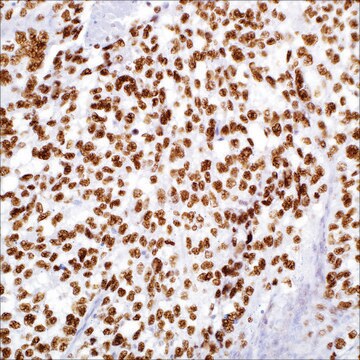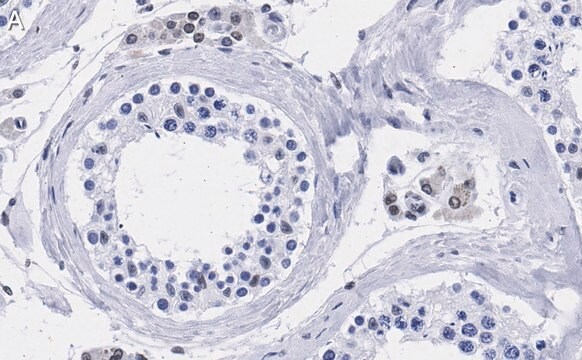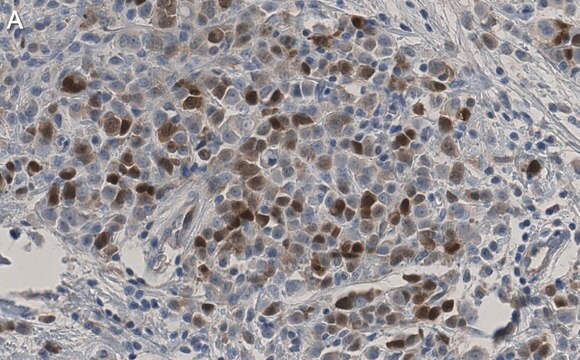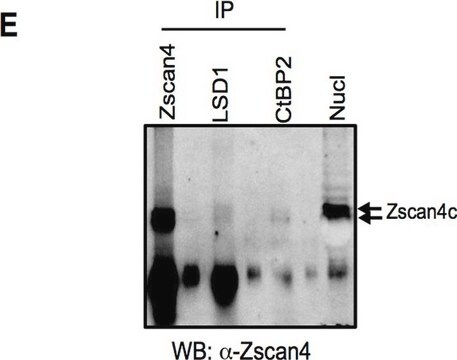SAB4200803
Anti-TFE3 antibody produced in rabbit
affinity isolated antibody, buffered aqueous solution
Sinónimos:
Anti-Class E basic helix-loop-helix protein 33, Anti-Transcription factor E3, Anti-bHLHe33
About This Item
Productos recomendados
origen biológico
rabbit
forma del anticuerpo
affinity isolated antibody
tipo de anticuerpo
primary antibodies
clon
polyclonal
formulario
buffered aqueous solution
mol peso
~60 kDa
reactividad de especies
mouse, human
envase
antibody small pack of 25 μL
concentración
~1.0 mg/mL
técnicas
immunoblotting: 4-8 μg/mL using human HeLa cells extract
immunofluorescence: 2.5-5 μg/mL using mouse embryo fibroblast NIH-3T3 cells
Nº de acceso UniProt
Condiciones de envío
dry ice
temp. de almacenamiento
−20°C
modificación del objetivo postraduccional
unmodified
Información sobre el gen
human ... TFE3(7030)
Categorías relacionadas
Descripción general
Anti-TFE3 antibody specifically recognizes TFE3 from human and mouse origin.
Inmunógeno
Aplicación
Forma física
Otras notas
¿No encuentra el producto adecuado?
Pruebe nuestro Herramienta de selección de productos.
Código de clase de almacenamiento
10 - Combustible liquids
Clase de riesgo para el agua (WGK)
WGK 3
Punto de inflamabilidad (°F)
Not applicable
Punto de inflamabilidad (°C)
Not applicable
Certificados de análisis (COA)
Busque Certificados de análisis (COA) introduciendo el número de lote del producto. Los números de lote se encuentran en la etiqueta del producto después de las palabras «Lot» o «Batch»
¿Ya tiene este producto?
Encuentre la documentación para los productos que ha comprado recientemente en la Biblioteca de documentos.
Nuestro equipo de científicos tiene experiencia en todas las áreas de investigación: Ciencias de la vida, Ciencia de los materiales, Síntesis química, Cromatografía, Analítica y muchas otras.
Póngase en contacto con el Servicio técnico








